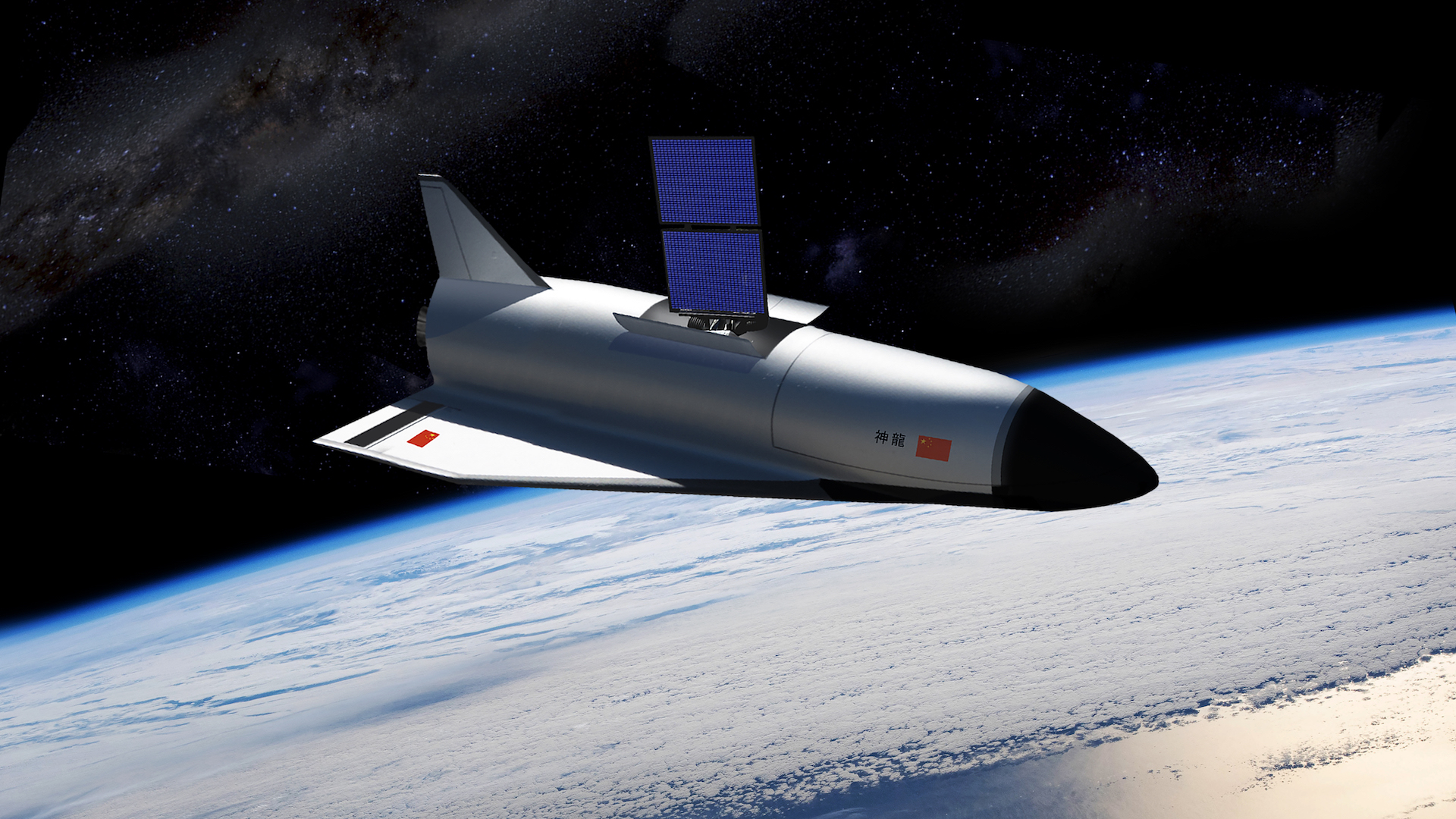China's secret space plane has released another unknown object over Earth
China's mysterious Shenlong space plane has released an unidentified object in orbit — the seventh such object released in the past six months. The U.S. Space Force is monitoring the situation.

At around 3 p.m. ET on May 24, China's mysterious Shenlong space plane released an unidentified flying object 372 miles (600 kilometers) above Earth's surface. Experts outside China don't know exactly what the object is, but they believe it may be a small satellite or a piece of hardware ejected before the craft is scheduled to deorbit.
The U.S. Space Force has been tracking the space plane since it launched aboard a Long March 2F rocket from Jiuquan Launch Center on Dec. 14. Little is known about the craft, although it appears to be similar to the clandestine Boeing X-37B space plane developed by the U.S., which is capable of making years-long excursions into orbit. China's secret space plane first launched in 2020 and remained in orbit for just two days. However, it stayed aloft for 276 days during its second voyage, which began in late 2022.
Shenlong (which means "Divine Dragon") deployed six smaller objects shortly after launch last year; each appeared to be emitting some kind of signal. So far, Chinese officials have remained secretive about the plane and its activities, and have not addressed the nature of the mystery objects or even acknowledged them.
Related stories: China has launched a secret robot to the far side of the moon, new Chang'e 6 photos reveal
Meanwhile, the U.S. military's X-37B space plane is also in Earth's orbit. The craft launched on Dec. 28 on a SpaceX Falcon Heavy rocket. The fact that the two missions are operating simultaneously is "probably no coincidence," Space Force Chief of Space Operations B. Chance Saltzman told Air & Space Forces magazine.
Perhaps unsurprisingly, China's state-run media outlets have not indicated any military applications for the space plane. "After operating in orbit for a period of time, the experimental spacecraft will return to the designated landing site in China," Xinhua reported, according to Gizmodo. "During this period, it will carry out reusable technology verification and space science experiments as planned, providing technical support of the peaceful use of space."
Reusable space planes have many potential commercial and scientific applications, including carrying passengers and launching satellites more efficiently. Nevertheless, the Space Force will continue to monitor the Shenlong mission until it returns to Earth.
Sign up for the Live Science daily newsletter now
Get the world’s most fascinating discoveries delivered straight to your inbox.

Joanna Thompson is a science journalist and runner based in New York. She holds a B.S. in Zoology and a B.A. in Creative Writing from North Carolina State University, as well as a Master's in Science Journalism from NYU's Science, Health and Environmental Reporting Program. Find more of her work in Scientific American, The Daily Beast, Atlas Obscura or Audubon Magazine.










